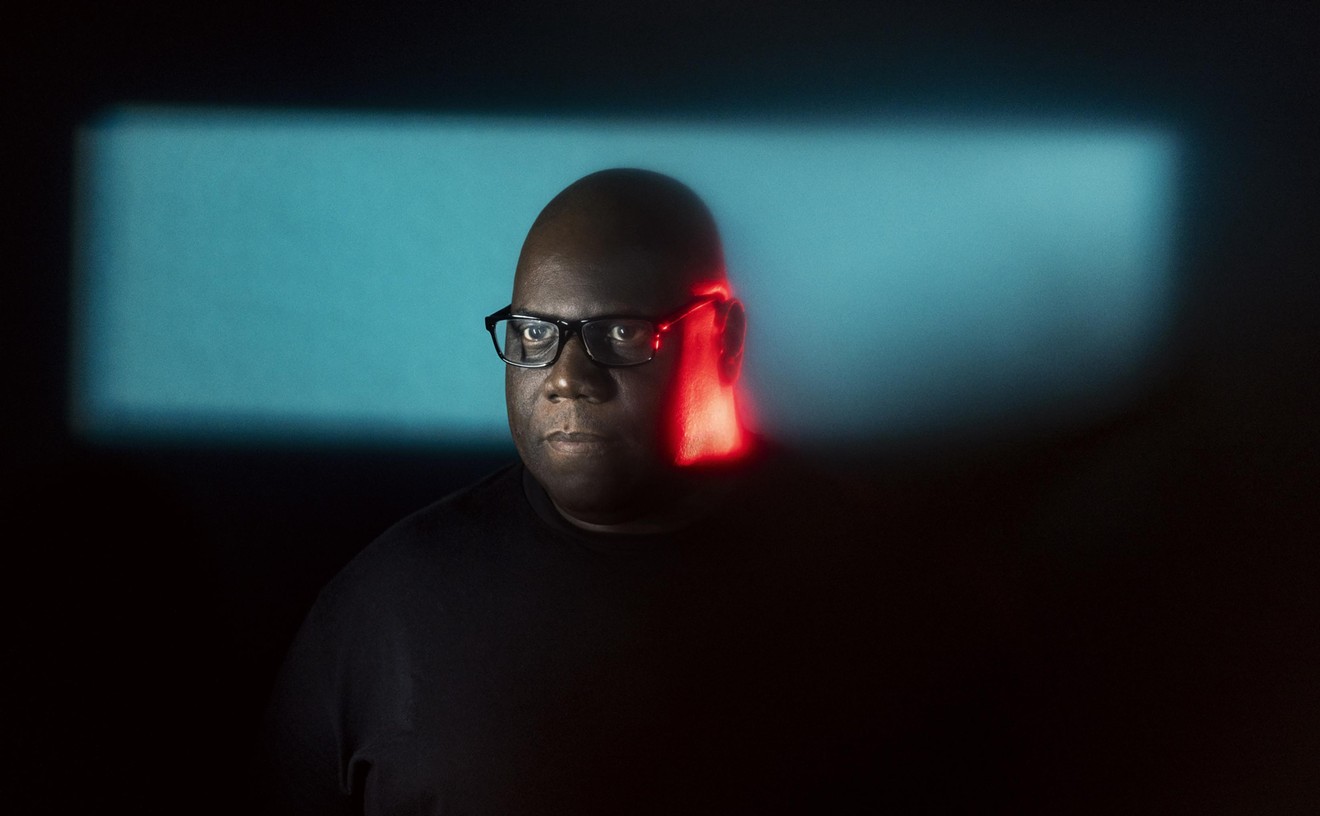A Glorious Lethal Euphoria
(Mesa/Bluemoon)
The Aqua Velvets
Surfmania!
(Mesa/Bluemoon)
The problem with most of the latest generation of surf revivalists isn't only that they inevitably must suffer in comparison with the very-much-alive and active Dick Dale, the guy who invented the stuff. It isn't even that most of them don't surf (or live anywhere near a beach, for that matter). It is more a matter of the crippling literalness common to the genre. Neo-surf ensembles such as Nashville's Los Straightjackets or even slightly-ahead-of-the-curve veterans like Man or Astro-man? or Shadowy Men on a Shadowy Planet may indeed draw from all the right sources and prove capable of providing rockin' good times, but few seem able to make the leap away from "Let's Go Trippin'" into something deeper.
San Francisco's three Mermen do live near a beach, but their -- Glorious Lethal Euphoria isn't really surf music at all. It is instrumental guitar music that owes a considerable debt to Dale, et al., but, like the group's self-released debut disc Food for Other Fish (a favorite of Dale himself -- he picked it out of a lineup of sixteen neo-surfy albums in a blind test for BAM magazine in 1994), it leaves the beach behind for darker parts. Guitarist/songwriter Jim Thomas and his band combine Dale's hard-picking percussive attack with the feedback grandeur of Neil Young's late-baroque work with Crazy Horse and end up with something else entirely, at once menacing and eerily pretty.
Lethal Euphoria flirts with the familiar jaunty momentum of the traditional early-Sixties surf rock, but Thomas is more interested in applying the basic surf sound -- slashing, reverb-drenched guitars, echoey tremolo whoops and dives -- into ferocious and haunting instrumentals of an almost orchestral density. Whether roaring through lethal little string-benders such as "Pulpin' Line" and the punkish "Drub" or riding the mesmerizing waves of feedback and melody on nine-plus minute epics such as "Obsession for Men" and "Between I and Thou," the Mermen never collapse into surf kitsch or fall back on the genre's beloved but overfamiliar cliches. "The Drowning Man Knows His God" may open as a trebly two-chord whammy-bar strut right out of the Ventures' songbook, but within seconds it mutates into a complex descending riff of barely restrained dread and finally wipes out in a squall of doomy guitar noise.
Despite the odd fits of postpunk racket, however, Thomas is rigorously classical in his attention to structure, and he demonstrates admirable guitar restraint. The burbling underwater atmospherics of "With No Definite Future and No Purpose Other Than to Prevail Somehow" and the shimmering riffs of "Scalp Salad" (nutty titles, huh?) disguise intricate arrangements, and the muted arpeggios and grandiose leanings of "And the Flowers They'll Bloom" are a long way from "Wipe Out," the Surfaris' quintessential surf standard from 1963. Little wonder that the final tune is a gently twangy reading of the third movement of the Third Symphony by noted surf pioneer Johannes Brahms.
Fellow San Franciscans the Aqua Velvets show little such ambition on the amiable but underpowered Surfmania! As you may guess from the title, this is from the more mannered, winking school of retro-surf music, with some nods to the equally mannered school of cocktail-jazz revivalism (sample titles: "Martini Time," "Surf Samba"). Guitars are clean and reverby, cheesy vibraphones and bongos are intermittently present, and riffs are lifted openly from Henry Mancini's deathless "Peter Gunn" theme, Ennio Morricone-style Western film scores, the Champs' "Tequila," and other vintage source material. It all makes for cheery if unimaginative background music of decidedly low voltage, which wouldn't sound out of place between those Esquivel and Combustible Edison CDs at your next cocktail party. Compared to the fury and invention of the Mermen, however, the Velvets' limpid surf sounds hold little water.
By David Dudley
Various Artists
Pal Joey: 1995 New York Revival Cast
(DRG)
In Joey Evans's world, nice young women are "mice" or "quail," and women who are neither so nice nor so young are meal tickets. The character of Joey, a supreme heel and opportunist, is not so nice himself, and he proves it several times in Richard Rodgers's and Lorenz Hart's 1940 musical Pal Joey. Audiences and critics used to squeaky-clean juvenile leads were not quite ready for this show's sleazy cynicism, and it closed on Broadway after only 374 performances. (The late Gene Kelly was the original Joey.)
You can't keep a good heel down, however, and Pal Joey rose again on the strength of standards such as "I Could Write a Book" and "Bewitched, Bothered, and Bewildered." There was a new production in 1952, and a film version starring Frank Sinatra was released in 1957. It's even been done in Norway. Last year in New York, City Center's Encores! series presented a concert version of Pal Joey, and this DRG set is a recording of that production.
There are several noteworthy things about it. Peter Gallagher, in the title role, is not one of them -- on CD, at least, he's too much of a charmless thug to be a convincing gigolo. Patti Lupone's fans, however, will rejoice to hear their idol in the role of Vera Simpson, the older woman who builds up Joey (with her husband's money) and then, disenchanted, discards him. Her reading of the sexually frank and sinister "Bewitched" is right on the money.
Another nice feature is the restoration of the show's original orchestrations, which were found in a warehouse the day before recording began. Daring and imaginative, they reinforce the music's biting edge and disabuse us of the notion that romance has a place in this show. Best of all, Rodgers's music and Hart's lyrics are the cream of American musical theater. Although Joey Evans isn't a likable person, the role inspired the duo to write songs that stick in your head, even as they stick in your throat.
By Raymond Tuttle
Various Artists
Funkmaster Flex Presents the Mix Tape
Volume 1: 60 Minutes of Funk
(Loud/RCA)
Rappers are to tape-assembling DJs as painters are to gallery curators. That is, while rappers create original works (in this case, songs), DJs decide which of those works to present (or, in this case, to manipulate) via their underground "mix tapes." Both conceptually and technically, there is an art to the mix tape: Using scratches, dubs, and musical overlays, DJs link the best moments from the best songs into a unified and cohesive whole, making for a very long hip-hop odyssey. A great mix tape will be three things at once: a compilation of the finest new and old hip-hop, a rarities collection featuring previously unreleased tracks from top artists, and a live album that captures the spirit of a bouncing DJ-driven house party.
Until now these tapes were sold on the streets of New York City and other hip-hop meccas for about ten dollars a pop. With 60 Minutes of Funk -- the first ever major-label mix tape, and on CD, no less -- RCA uses its superior distribution network to offer the joys of these hip-hop hodgepodges to people outside the inner cities. Recorded in one continuous take by popular New York DJ Funkmaster Flex, 60 Minutes fuses classic tracks such as L.L. Cool J's "Rock the Bells" and A Tribe Called Quest's "Award Tour" with in-studio improv by Fugees, Method Man, and Keith Murray, plus other hip-hop miscellany, including DJ Kool's "20 Minute Workout" and a "Speech" by KRS-One, and then ties it all together with Flex's own cutups and shout-outs. By including only the most relentless beats and craziest rhymes, Flex makes hip-hop that's all about having a party -- the way it's rarely heard these days, but the way it was always meant to be.
By Roni Sarig
Corey Harris
Between Midnight and Day
(Alligator)
Every so often you hear an album by an unknown bluesman and you wonder, "Where the hell did he come from?" Corey Harris is that kind of bluesman. He's from Denver, but he sounds more like the proud son of the Mississippi Delta. His debut album, Between Midnight and Day, was recorded nearly two years ago in Springfield, Virginia, yet it has the ambiance of a late-night session cut in the backroom of a deep South roadhouse in the Thirties. Harris was only 25 when he made this album, but his knowing vocals belie his age, while his amazing bottleneck slide-guitar playing recalls the greatest acoustic guitar masters of the pre-war era.
Although his work carries you back to a halcyon time in blues history, Harris is no revivalist. Like Keb' Mo', another young player with Delta dirt in his blood, Harris effortlessly weaves his own compositions into a set of blues staples written by legends such as Muddy Waters and Charley Patton. By the time he closes the album with an intense reading of Elmore James's "It Hurts Me Too," you'll hear Harris originals such as "Bound to Miss Me" and "Between Midnight and Day" as worthy successors to the masterworks he covers on this remarkable set.
By John Floyd










